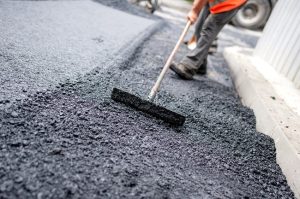The construction industry has nothing against asphalt. It is safe, comfortable, fast to use, and can last indefinitely. Hence, it has remained a long-time favorite. However, modern concerns have seen some changes in how asphalt is created and employed, resulting in two different mixing approaches of asphalt.
Hot Mix Vs. Cold Mix Asphalt
The original way of mixing asphalt involved an aggregate of constituents, sand, gravel, and asphalt in their solid form into a rotating drum mixer. This is followed by heating them at high temperatures (300 to 400 degrees) to create a viscous semi-liquid paste.
The mixture is then laid down wherever it is needed. Unfortunately, the hot mix process requires timing the duration to keep the mix hot and molten before it is laid. It is also more expensive and causes harmful emissions into the environment.
The solution involves emulsifying the asphalt with water and an emulsifying agent when mixing the aggregate with the rest of the constituents. Therefore, we get a mixture that doesn’t require heating to stay liquid — it is also known as Cold Mix Asphalt (CMA)
Pros of Cold Mix Asphalt
Affordable
The cold mix has an obvious economic advantage. A lot of expenses that go into heating, transporting, and handling Hot Mix Asphalt are eliminated. CMA can be added directly from the container it comes with into the target area.
You also save on power that would otherwise be spent on mixing the aggregates. The lesser cost means that you can mix small quantities of CMA to use immediately without having to worry about wasting energy.
Environmentally Friendly
CMA has a much lower carbon footprint than its counterpart. The removal of heating prevents harmful emissions from the components from escaping into the atmosphere. It also saves energy that would have been spent in heating the mixture into the desired texture.
Convenient
You can get CMA supplied in small packages, pre-mixed for fast, quick fixes without the need for extra hands or a mixer. This is useful when you need to fix patches and cracks quickly.
There are no time constraints experienced in HMA since you don’t need to keep the mixture hot and usable. This also means that CMA is more feasible to be used in colder temperatures, without waiting for the weather to be more convenient.
The speed of using CMA helps to nip cracks in the bud, stopping them from expanding or causing accidents.
Cons of Cold Mix Asphalt
Temporary/Less Durable
Despite the benefits, cold mix asphalt has a major flaw, and that is in its durability. Its performance during use is subpar, as it cracks fairly easily. This means that it is often used only as a temporary solution or in low-traffic areas.
The lower durability can be attributed to its lack of flexibility. Hence, the expansion and contraction it experiences as the season changes start to break it off. From the inside-out.




